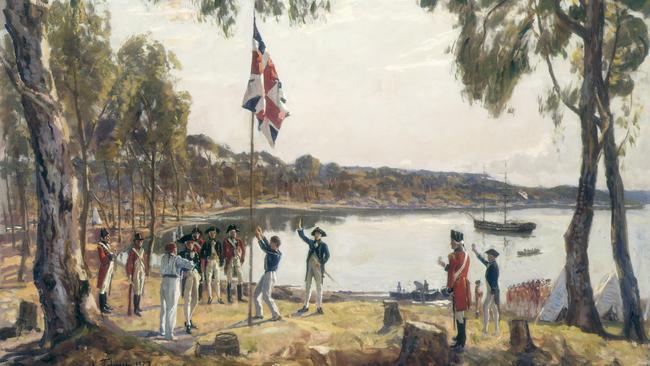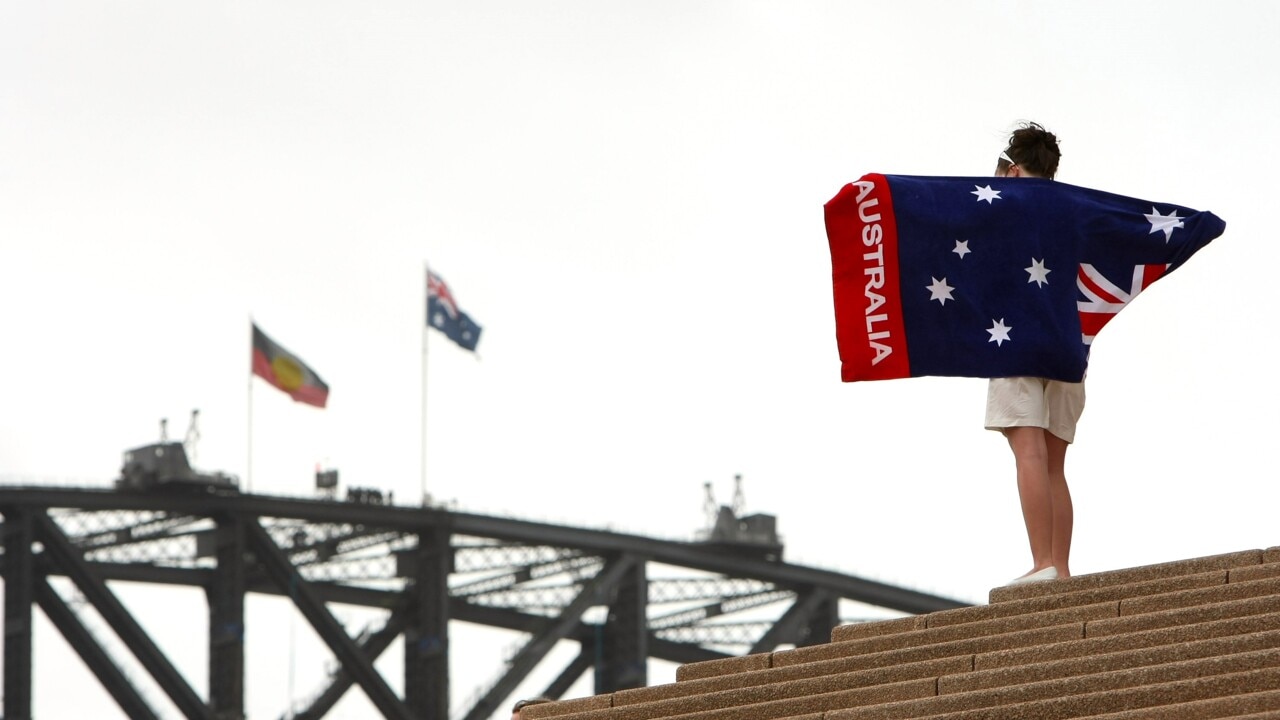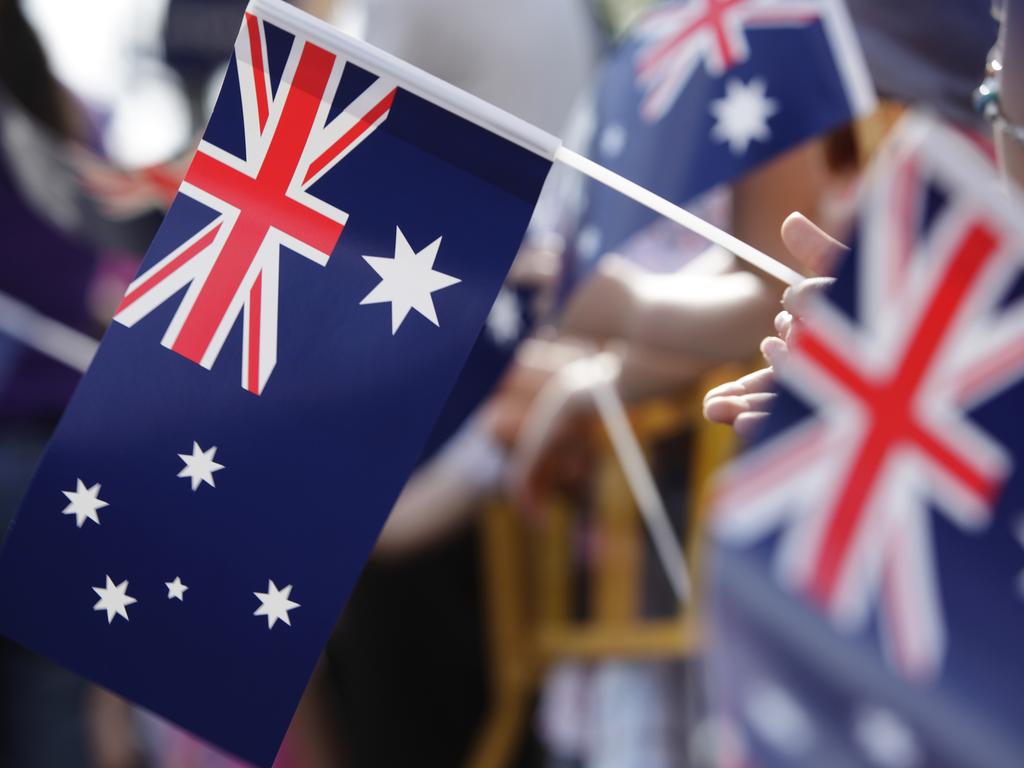
As Martin Luther King said, nothing is more dangerous than sincere ignorance and conscientious stupidity. It is hard to have serious discussion about the meaning of European settlement unless we first can agree on the facts. Yet fewer than four out of 10 Australians know which event they are supposed to be celebrating or mourning on Wednesday, according to a survey last week by Compass Polling.
Twenty-six per cent believe it to be the anniversary of the establishment of Federation, while 20 per cent think it marks the discovery of Australia by James Cook. Only 39 per cent correctly identified Australia Day as the date of the arrival of the First Fleet at Sydney Cove in 1788.
Popular understanding of Australian history has not been assisted by our incurious professional historians who have been slow to establish the basic facts of settlement. Worse still is the conscious invention of false history, notably in recent times by Bruce Pascoe, whose attempt to portray pre-settlement Australia as a land of sophisticated farming and established towns is pure whimsy.
It is enough that Indigenous hunter-gatherers were able to survive and thrive on this unforgiving continent, largely isolated from the outside world. Pascoe’s denialism dishonours a people and their culture.
A new account of the founding of modern Australia by Margaret Cameron-Ash exposes how much of our understanding of the events of 1788 have been clouded by prejudice and how much we have still to discover. Tellingly, Cameron-Ash trained as a lawyer rather than a historian.

Her book Beating France to Botany Bay: The Race to Found Australia debunks the myth that Australia was purely a dumping ground for Britain’s criminal class, the explanation for settlement that was considered unquestionably true by Manning Clark, one of Australia’s most influential historians. In his four-volume A History of Australia, Clark makes no mention of French voyager Jean-Francois de Galaup, comte de Laperouse, whose expedition to the Pacific stirred the British into action. He makes no mention of the 1799 Bunbury inquiry commissioned by the British government that ruled out sending convicts to Botany Bay because of the expense. Britain at that time was in the middle of a rare but refreshing period of fiscal consolidation in the aftermath of an expensive war with France.
Yet, as Cameron-Ash documents, intelligence that Laperouse was on course for Australia with two vessels laden with trees, plants and seeds, manufactured goods, tools and unwrought iron convinced prime minister William Pitt the Younger that French settlement was imminent. The intelligence was the catalyst for a snap decision at a cabinet meeting on August 17, 1786, to commission a fleet carrying convict settlers under the command of Captain Arthur Phillip.
The closeness of the finish to the race 17 months later, in which the 11 vessels in the First Fleet anchored in Botany Bay five days before the arrival of Laperouse, is a story that has been little explored. It has the makings of an epic movie in the tradition of Peter Weir’s Master and Commander were any film company prepared to challenge the zeitgeist and take on such a project.
Cameron-Ash sticks to telling the story rather than lecturing readers on the morality of arriving uninvited to settle in land occupied by an indigenous population. Nonetheless, by placing the settlement of Australia in the context of strategic rivalry between European powers, she points to the inevitability of settlement by one or more European powers in the globalised world of the late 18th century.
The Pacific was becoming strategically important, largely because of the fur trade and the settlement of the American west coast. The romantic notion that the Indigenous population could live undisturbed on the great southern continent hermetically sealed from modernity is patently absurd.

It is unfashionable these days to speak of Australia’s good fortune in being settled by the British in the period of the Enlightenment. Yet, with the benefit of hindsight, settlement by the French, a year before the outbreak of the French Revolution would have been a fate far worse.
It was a colony founded on high ideals of the power of scientific discovery and respect for the equal worth of every human being. Those who influenced the nature of Australian settlement, people such as Joseph Banks, Pitt and the wrongly maligned King George III, were insistent that there should be no slavery. Phillip’s instructions, and indeed his instincts, were to treat the Indigenous population with respect and seek peaceful coexistence.
Crucially, NSW would be in the hands of a civil administration rather than under military command, ensuring that the law would be applied equally in principle. The greatest failing of Australia’s founders was naivety, their failure to foresee the size of the challenge in reconciling people from such different cultures.
Andrew Roberts’s definitive new biography of George III cites the king’s instructions to Phillip on the eve of the First Fleet’s departure from Britain in April 1787. He was told to establish good relations with the Eora tribe and to “endeavour by every means possible to open an intercourse with the natives and to conciliate their affections” and was directed to punish anyone who sought to “wantonly destroy them”.
George’s liberal values were clearly established. His desire to make peace with Native American tribes and to prevent the spread of colonial settlement beyond the Atlantic coastal fringe had put him at odds with George Washington and the American colonial government. Together with the issue of taxation, his instincts towards Native Americans helped to precipitate the American War of Independence.
Calibrating modern Australia’s foundational story with these facts is not to downplay the ugliness of the conflict between settlers and Aboriginal Australians or to underestimate the moral complexity of European settlement. It does, however, allow us to avoid the divisive reasoning of racial essentialism, weaponised by the Black Lives Matter movement aided and abetted by critical race theory. History as a pursuit of truth is our only hope of establishing a foundational story that unites every Australian.
Nick Cater is executive director of the Menzies Research Centre.








The proposal that January 26 should be a day of truth telling should not be dismissed lightly, especially by conservatives.